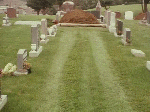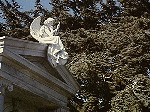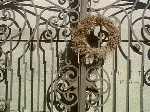




| Member of BannerPower Rotation System |





I am often asked for a glossary of symbols so that my fellow taphophiles can "read" gravestones. I present one here, warning you that I mistrust definitions of symbols. Fans of Jung seeking to transcend their present consciousness will be dissatisfied with this list because I do not believe in universals. We possess endlessly creative minds which can take a word, an object, or an idea and transform or transmogrify it into something new. Many people who choose grave motifs have no idea what they are putting on their stones. What they know is that they like the design. Symbols can express ethnic identity, religion, association, or the good taste of the time. People have been known to choose a symbol for no better reason than "that's the one I am supposed to have". Ask them why and you will hear them descend into circular reasoning. The question is, then, what does the symbol mean? Does it mean anything at all when it appears just because someone happened to like it? Or does it take on the textbook meaning, constructed by scholars who have delved into scriptures, epics, and chronicles of the past? We read that the cross is the symbol of resurrection, but does the Croat who uses the Latin Cross mean this when he sets up his tomb next to Serbs marked with Orthodox Crosses? Do the rows of crosses in military cemeteries stand for the hope of resurrection or the despair of great sacrifice? Or do they just tell us how we see soldiers as nothing more than hands in a production line? Are they rubber-stamps on the fact of death and nothing more? By all means, when you walk through a cemetery, amuse yourself by looking at the details of the stones. There's no harm in evaluating the monuments using what you have read or otherwise know. Be warned, however, that each cemetery is a peculiar place. Symbols which often mean one thing may have a different local meaning. Learn your history. For example, in the cemeteries of San Francisco, the three-cornered eye can represent the Trinity or the Masons as is common elsewhere. An eye can stand for the all-seeing, beneficent presence of God, looking out for the dead as well as the living until the end of time. But, in Colma, the eye may mark that the deceased as a member of the Vigilance Committees of 1851 or 1856. It scries you as a potential wrongdoer. For those victimized by the Committee, it stands for tyranny. Whose meaning is correct? Here lies the problem of symbol interpretation. Just as with a work of literature, we must understand the point of view of the reader as well as of the author. Cemeteries exist in societies. When we walk in them, we are walking amongst members of our own community. What it all means depends as much on us as on what the stonecutter or the patron wanted to convey. Interpret what you see at your own risk.... |

![]()
![]()
![]()
![]()
![]()
![]()
Questions or Comments?
Return to City of the Silent